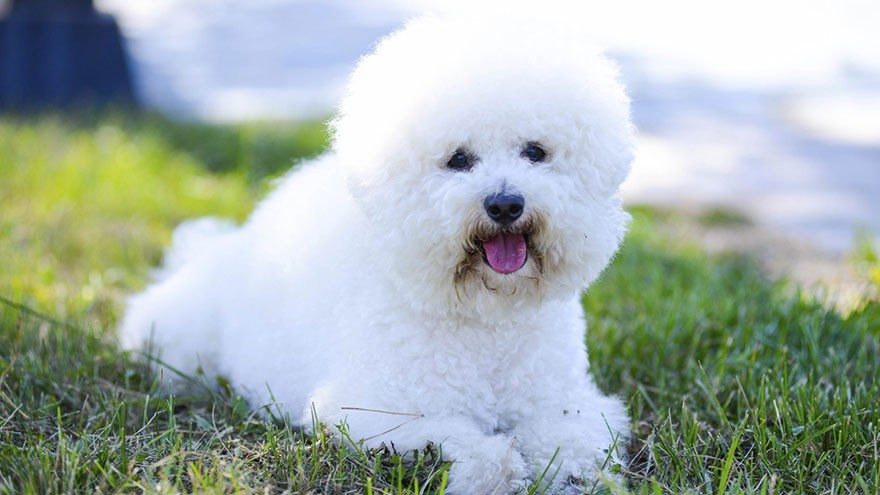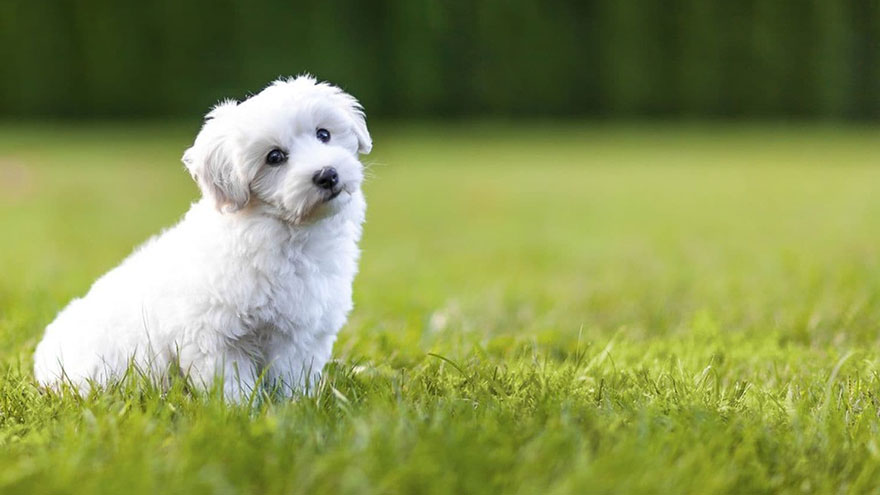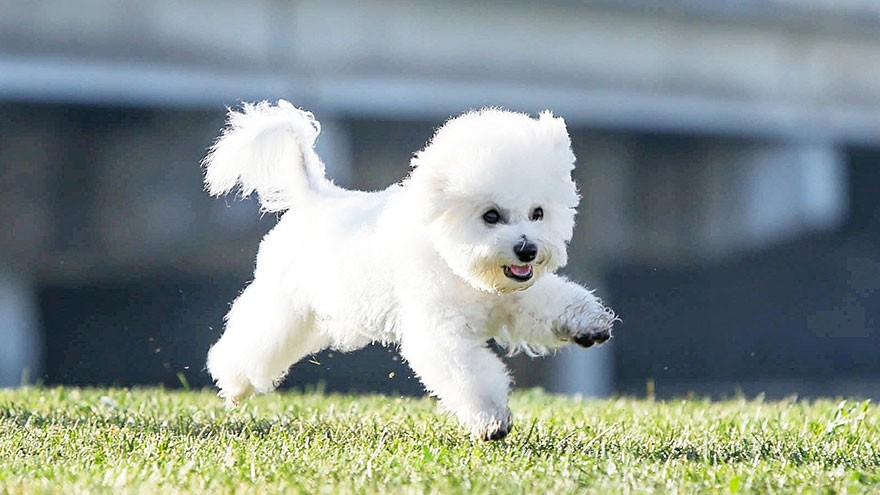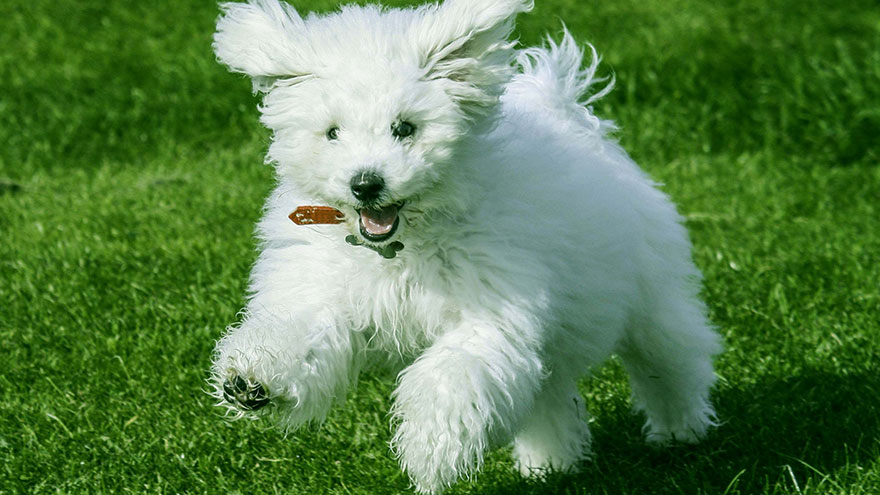Bichon Frise Breed Information
This French breed of dog is small, fluffy, and highly devoted to its master. The name Bichon Frise in French actually translates to “curly lap dog”, which is the perfect description. Originally, this breed came from the Mediterranean and was a much larger dog that was a favorite of the Royal family. In fact, when originally bred, the name was Bichon Tenerife. However, during the French Revolution, many dogs were abandoned, left to roam the streets where they were taken in and used for circus performances.
Although we know of the two varieties mentioned this breed actually falls within three additional categories to include the Bichon Bolognais, Bichon Maltais, and Bichon Havanais, all from the same area around the Canary Islands. Prior to becoming popular among the Royals, the varieties of the Bichon were owned by sailors that would travel with them, using them to barter for fare.
Although the Bichon fell in popularity for some time, the breed was resurrected when Napoleon Bonaparte took control but then dropped off again in the late 19th century. However, by the early 1930s, the Societe Centrale Canine of France took interest in the breed, creating the official standard.
Through breeding and interpretation, the Bichon Frise was allowed in the French Kennel Club in 1934. By 1971, the breed was allowed to show with the American Kennel Club under “miscellaneous” but just two years later, fell into the “non-sporting” group of dogs.
Bichon Frise Temperament

Without doubt, the Bichon Frise has one of the most wonderful personalities. Typically, owners of this breed describe the dog as sensitive, gentle, loving, and playful. If you want a wonderful family pet, this is it. This little dog is always happy and eager to please. The only real downfall to owning a Bichon Frise is licking, which simply seems to be the dog’s way of loving its master. Additionally, the Bichon Frise needs to be handled with love and care. Unfortunately, if the breed is not provided a secure home, it may have a tendency to bite.
You do want to remember that if buying a Bichon Frise for show, it is important to choose wisely, working only with a top breeder in that this particular breed can have too soft a temperament for the show ring. Understanding that the Bichon Frise is a somewhat shy breed is important. If you purchase the dog to show but find it is overly shy, then you know it is not a good show prospect. If you want a pet for children and/or other pets, you should have no problem.
Bichon Frise Size and Color

The first thing you think of when you see a Bichon Frise is a walking powder ball. Although a small dog, the hair can give the illusion of being larger than actual size. Typically, both male and female will range from 9.5 to 11.5 inches at the withers and have a body in correct proportion. The eyes are dark and round, the skull is just slightly rounded, the muzzle is nicely balanced to the head with a prominent nose, and the tail curls gently over the back. As far as weight, the Bichon Frise weighs on average 13 to 18 pounds. When cared for properly, this breed can live anywhere from 14 to 16 years.
The coat is by far the most noticeable of all features. This breed has a soft but thick undercoat while the outer coat is curly and coarse. When petting this breed, you will notice the hair feels similar to velvet. Obviously, to keep the dog’s coat looking beautiful, regular grooming is required, along with bathing and brushing. Finally, the Bichon Frise has a white hair, although you will also see hues of apricot, buff, and cream somewhere on the body or around the ears. Keep in mind that according to breed standards, any color other than the white being on more than 10% of the body is considered a fault.
Bichon Frise Feeding and Grooming Requirements

As with many purebred dogs, the Bichon Frise should be kept on a healthy, balanced diet. With proper feeding, the breed will do quite well. Just make sure you do not overfeed to avoid problems with obesity. Although any of the quality, dog food brands are a good option, you might also get involved with making homemade meals, which would be healthier and rich in nutrition.
As mentioned, the Bichon Frise has two coats, a thick undercoat, and a curly over coat. This dog would need to be groomed on a regular basis, trimming the hair back to show the body’s natural line. In other words, you want to see rounding from all viewpoints, never cutting square or short. In addition, the hair around the dog’s head should be round with the top line looking level. As for bathing, this should be done by a groomer at the time of trimming.
Bichon Frise Exercise Needs

One of the keys to keeping a Bichon Frise healthy is keeping him current on vaccines. The reason is that most breeds are given shots over years as a means of helping boost immunity and prevent disease. However, for this breed (and others), experts are now recommending dogs be given only core vaccines to include distemper, parvo, rabies, and adenovirus, having the veterinarian administer all others on an as-needed basis only.
Although most Bichon Frise are healthy, they do have a few common problems to include allergies and skin irritation, dental problems, bladder stones and infection, luxating patella, ear infections, and eye disease.
The important thing is to purchase a certified, healthy dog and to work closely with a qualified veterinarian if any symptoms of illness arise.
Read More About Bichon Frise
- Bichon Frise : 10 Most Common Questions
- Bichon Frise Training Guide
- Owning a Bichon Frise : Breeder Recommendations
- Bichon Frise Health Guide

